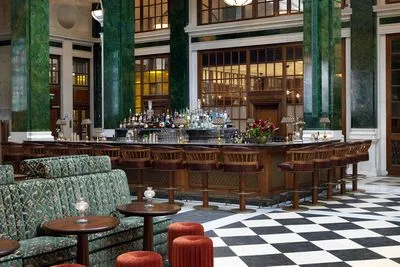BRASSO RAILWAY STATION
THE BRASSO RAILWAY STATION
My friend Kriszta Doczy has distributed my films for the past 11 years.
Along the way Kriszta has shared with me many fine films from her collection
gathered from around the world. One of those films is this most unusual piece
of dance film which is also an invaluable showcase of folk dances in a
particular region of Eastern Europe.
Many thanks to you Kriszta for sharing this film with us.
AT THE MOMENT I’m making a new film which is set in the Kyneton Railway Station, but of course it won’t be anything like Brasso. My head is full of things to do with trains and stations, so that’s why it came into my mind to share Brasso with my friends.
While I’m at it, let me refer you to another station, “CANFRANC” which has captured my imagination since I first heard of it:
This extraordinary and most lavish railway station was created to serve rail connections between Spain and France. Here’s a summary from Wikipedia about this astonishing building:
Canfranc International railway station (Spanish: Estación Internacional de Canfranc) is a former international railway station in the village of Canfranc in the Spanish Pyrenees. The Somport railway tunnel, which carried the Pau–Canfranc railway under the Pyrenees into France, is located at one end of the station.
The station, which was opened during July 1928, was constructed on a grand scale to serve as a major hub for cross-border railway traffic. Its main building incorporates elaborate Beaux-Arts architecture, featuring 365 windows and 156 doors, along a length of 240 metres (790 ft). The station experienced numerous highs and lows, services having been temporarily interrupted by the intentional sealing of the Somport tunnel during the Spanish Civil War, while being extensively used by international traffic during the Second World War as the "Casablanca in the Pyrenees". The postwar era brought a period of stability and prosperity for the station and the line, although officials became increasingly pessimistic for its future during the 1960s. International services came to an abrupt end during 1970 following a train derailment that damaged a key bridge in France.
Canfranc station has remained open despite the international line's curtailment in 1970, but is served only by a handful of trains from the Spanish side alone. It has experienced a major decline and neglect, resulting in much of the site becoming derelict. The local government has ambitions to reopen the international line and to redevelop the station, which would involve the renovation of the existing station building for use as a hotel and its replacement by a new facility. In February 2020, funding for both the relaunch of international services and the station's rehabilitation was made available by the European Union.







Different in production manners but still very close to some of the Les Blank's anthropological colorful folk movies that I,have presented here in Split years ago. For that occasion I have established web contact with his son, great artist too... thanks Krizsta for sharing this fine piece...
ReplyDeleteThat station would be a most wonderful place in which to set a film. Something along the lines of "A Russian Ark'.
ReplyDelete